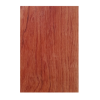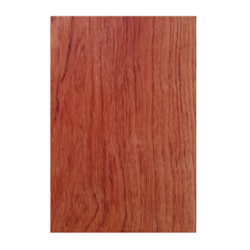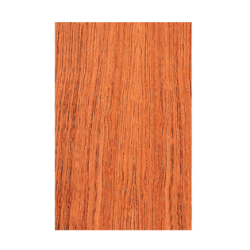Bubinga

Family: Fabaceae - Order: Fabales -
Class: Magnoliopsida
Scientific name: Guibourtia
tessmannii / Guibourtia demeusei /
Guibourtia pellegriniana
Trade name: Bubinga, African Rosewood
Also known as Kevazingo, Akume, Waka and Oveng
Origin: West Africa and tropical Central Africa.
Instrumental uses: Guitar back and
sides, fingerboards, bridges, Electric guitar bodies, head plates and inlays.
Tonal properties:
Very responsive and loud, dense and sustained
sounding.
Very clear sound and well defined along the entire
spectrum range. Can be very easy to work but also can be hard to
bend depending on the grain and growth pattern of the tree.
Finishes extraordinary well.
African Rosewood / Bubinga is
divided in 3 different kinds:
- Guibourtia tessmannii grows in
Equatorial West Africa. Is found in dense virgin forests and also near rivers
or lake shores.
The tree reaches a height of 50 m. The bole is straight, cylindrical, up
to 20 m in length. The trunk diameter attains 100 to 130 cm over the buttresses.
Average dried weight 890 kg/m3
- Guibourtia pellegriniana grows from Cote d`Ivoire to Gabon. Prefers closed rain
forests and transitional forests, often found in small groups.
The tree reaches a height of 32 to 50 m. The bole is straight,
cylindrical, up to 23 m in length. The trunk diameter attains 70 to 100 cm over
the buttresses.
Average dried weight
940 kg/m3.
- Guibourtia demeusei grows in West Africa and in
tropical Central Africa, along the coastal area of tropical Africa. The tree
reaches a height of 25 to 30 m. The bole is irregular, up to 20 m in length.
The trunk diameter attains 100 cm and is usually buttressed.
Average dried weight
1070 kg/m3.
In general all are stiff and also very resistant with an
interlocked grain.
Figured parts such as pommele, flamed, waterfall,
quilted or mottled can occur during several growing circumstances.
CITES status is protected under the
Appendix II. Is not reported on the IUCN Red List.
Gallery Photos




